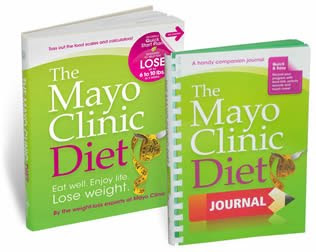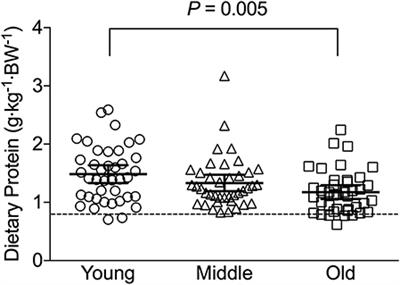
Creating a comprehensive description of food environments is a crucial first step toward promoting healthy diets and climate action. This will allow you to identify areas that can be improved and reduce climate risk. The comprehensive description of food environments will provide metrics as well as tools to assist policymakers. This article will discuss key elements that make up a healthy and happy food environment. It does not only concern the quantity of pollution and the quality of food. It must also include strategies to improve diets and overall health on the planet.
The food environment can include both built and natural settings. These two types of environments can be classified according to their complexity. Informal markets are more prevalent in rural LMICs than they are in urban areas. Access to healthy food and markets can influence your choice of foods, and impact your health and nutrition. Formal food markets are more common in urban settings. A well-designed environment can encourage people to eat healthy foods. It is not enough to have a healthy lifestyle. It must offer opportunities for food-related activities to encourage healthier eating.

It is possible to have a better understanding of the food environment by looking at the food systems and how they interact. It is essential to understand how the food environment works in order to provide healthy meals. The environment can have a significant impact on the food that people eat. Aside from the differences in food environments between adults and children, adults also have their own food environments. Despite these differences, healthy food and unhealthy food are mostly the same in the body. Therefore, a healthy food environment is essential for a healthy diet.
The systematic analysis of all its elements is required in order to develop a food environment. It is important to understand that the food environment can be complex. The various elements that make up a food environment include accessibility, affordability, promotion, and quality. The food environment differs from one place to another. These environments can have different dietary outcomes depending on the type of diet and socioeconomic status. These areas can be a good place to live and prevent obesity.
The health of the world's population depends on a healthy and stable food environment. Its components contribute to the health of people living in a given country. They can have an effect on food quality and the diet. In the case of poorer populations, a food environment is a major cause of obesity. For these reasons, a food environment should be improved and the environment should be considered in a public-private partnership. Moreover, it should be transparent, accessible, and accessible to people in different cultures.

A healthy diet depends on how the food environment affects our health. How much food people consume and where they eat will be affected by changes in the environment. For example, the food environments in restaurants, workplaces, and schools are all critical to healthy eating. In addition, the food environment influences the choices of individuals. It is rare for most of the food choices to be available in a neighborhood. They should not limit their choices to the city.
FAQ
What is the best time to do Intermittent fasting in order to lose weight
It is not as easy as you think. When determining the number of days you should fast for optimal fat reduction, there are many factors to consider. These factors include:
-
Your age. For example, if you're young (under 40), intermittent fasting may be too difficult for you because you have less time to recover from each day's fast. You may not have enough energy for a sustained period of daily fasting if you are older (over 60).
-
Your current body composition. Longer periods of fasting are more beneficial if you have a lot muscle mass. For those with less muscle mass, however, you may be able to benefit from shorter fasting times.
-
How physically active you are. You may need to increase your fasting time if you exercise often. This will ensure you get enough rest between workouts.
-
Your medical history. Additional fasting monitoring may be required for certain medical conditions such as diabetes or heart disease.
-
How well do you tolerate stress? Stressful situations can make us eat more. This problem can be avoided by increasing the length of your fasting periods.
-
It is the type of diet you are following. Certain diets, like ketogenic diets, may require even longer fasting periods.
-
The quality of your sleep. The quality of your sleep is also a factor in increased appetite and decreased metabolism. Therefore, it may take some experimentation before determining what works best for you.
-
The amount you eat of protein. Consuming more protein helps to stabilize blood sugar levels. This could lead to lower insulin levels. This would allow one to fast for longer periods.
-
People who want to gain weight or lose it will need to fast for longer periods of time than those trying to lose.
-
How many calories do you consume in your fasting windows? Fasting for fewer calories a day can result in more fat loss than fasting to eat more calories a day.
-
Your fitness level. The metabolic rate of fast people who are fit is higher, which means they burn more calories each day.
-
Your gender. Women tend to have a greater appetite than men, so they might need to fast for longer periods. Women may only fast for 20-30 mins each morning because they have a smaller appetite.
-
Your lifestyle. Do you get enough physical activity? Do you do a lot of exercise each week? Do you work at a desk all day? All these factors can have an impact on how much time you should speed.
-
How much money are you willing to spend on food? Not all healthy food means you need to spend a lot more on groceries. You can save money by buying whole grains instead of white bread, fruits instead of candy bars, and lean meats instead of fatty cuts.
-
It's important to manage your hunger. You don't have to skip meals if you don’t want to.
Would cardio exercises make me lose weight fast?
Cardio exercises are great for burning calories and helping you lose weight. It all depends on how many calories you've stored and what type exercise you do.
Cardio exercises might not be enough to lose excess weight if your body is overweight.
They should be combined with other types of exercise and dieting.
For instance, if you want to lose weight fast, you should perform cardio exercises like jogging or running. These cardio exercises burn more calories than any other type of exercise.
You must train resistance if your goal is to gain muscle instead of losing weight. Resistance training involves using free weights, machines, bands, elastic bands, etc.
Combine cardio exercises and resistance training to quickly lose weight.
You need to combine cardio and resistance training in order to lose weight quickly.
What can I eat while on intermittent fasting in order to lose weight?
Cut out carbs to lose weight. This means avoiding bread, pasta, rice and potatoes as well as other carbohydrate-based foods.
You'll also want to avoid eating too much protein because it keeps you full longer. So you won’t feel hungry as often.
Instead, choose foods rich in healthy fats. These foods can keep you satisfied for hours after they are eaten.
It's important to make sure you're drinking plenty of water, too. Water can help you lose fat by keeping you hydrated.
These foods may be what you crave when you eat fast. You don't have to cave to your cravings. If you do, you could gain more weight than you lost.
To prevent overeating, try keeping an eye on how much you consume throughout the day. When hunger strikes, drink a glass of water instead of reaching for another snack.
It may sound counterintuitive but this has been shown to help you lose weight. According to a study published in Obesity, participants consumed fewer calories if they drank plain water rather than sugary beverages.
Consuming water plainly also helped to decrease hunger. Drinking water is the best way to lose weight if you don't want sweetened beverages.
You don't have to eat every calorie or avoid certain foods if you are trying to lose weight. Instead, try to make small changes in your life.
For example, you can start by swapping your usual breakfast sandwich for a bowl of oatmeal. Try swapping your afternoon cookie to a piece or fruit.
These simple changes will help you shed weight quickly and without spending a lot of time in the kitchen.
Why should you lose weight before reaching 40?
People over 40 should take care of their health and keep fit. It is important to stay fit throughout your life. This includes regular exercise, eating well, not smoking, and drinking moderate alcohol.
It is also important that you understand that as we age, our bodies undergo changes. Our bones weaken and our muscles shrink. You can slow down the aging process if you take care of yourself.
It is important to stay healthy and fit as you age. These include:
-
Better sleep
-
Improved moods
-
Energy levels increase
-
Lower risk of cancer
-
A longer life
-
More independence
-
Better sex
-
Better memory
-
Improved concentration
-
Improved circulation
-
Stronger immune system
-
Fewer aches, pains
Statistics
- It's estimated that half of all American adults attempt to lose weight every year (1Trusted (healthline.com)
- According to Harvard Health, it's estimated that a 155-pound (70-kg) person burns roughly 112 calories per 30 minutes of weight training (5). (healthline.com)
- One study in 9 active men found that HIIT burned 25–30% more calories per minute than other types of exercises, including weight training, cycling, and running on a treadmill (18Trusted Source (healthline.com)
- One 6-month study showed that simply doing 11 minutes of strength-based exercises 3 times per week resulted in a 7.4% increase in metabolic rate, on average. (healthline.com)
External Links
How To
How to lose weight quickly
There are many quick ways to lose weight. But, many people find them ineffective and unsustainable. Dieting and exercising are the best ways to lose weight quickly. Your daily calories should be less than your daily intake. This means eating less calories than you burn during your normal activities. It is important to decrease your calorie intake in order to lose weight quickly.
You should avoid foods that contain large amounts of fat and sugar since they increase your appetite. Make sure to drink lots of water every single day. It helps keep you hydrated and keeps your metabolism running at its peak. You'll get results quicker than you ever imagined if you combine all three of these things.